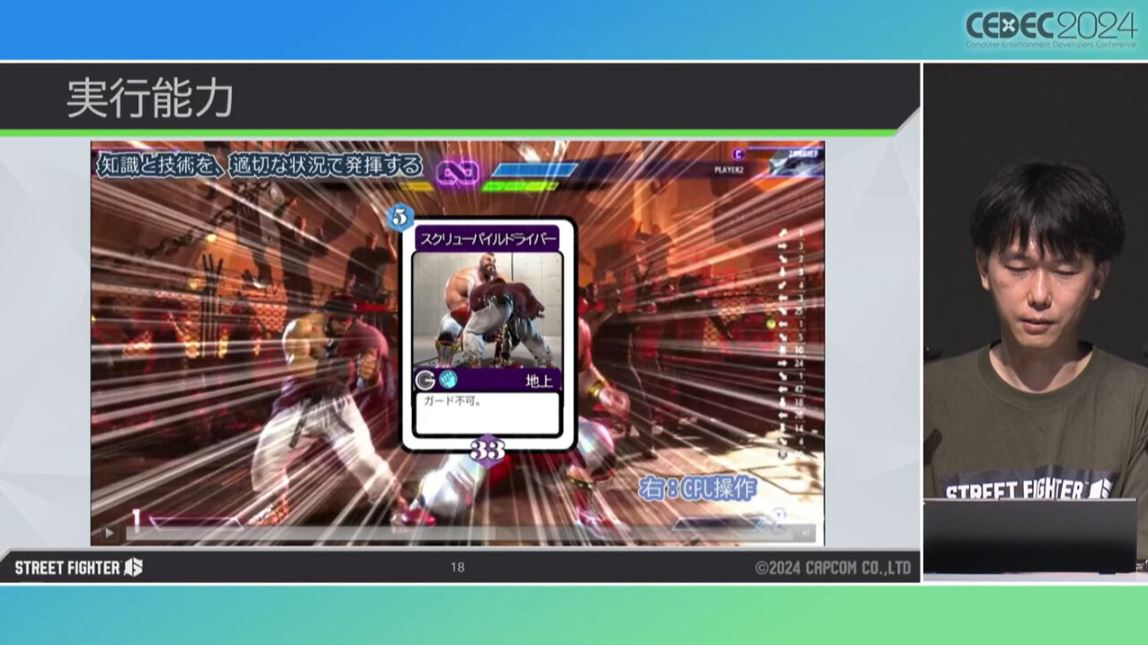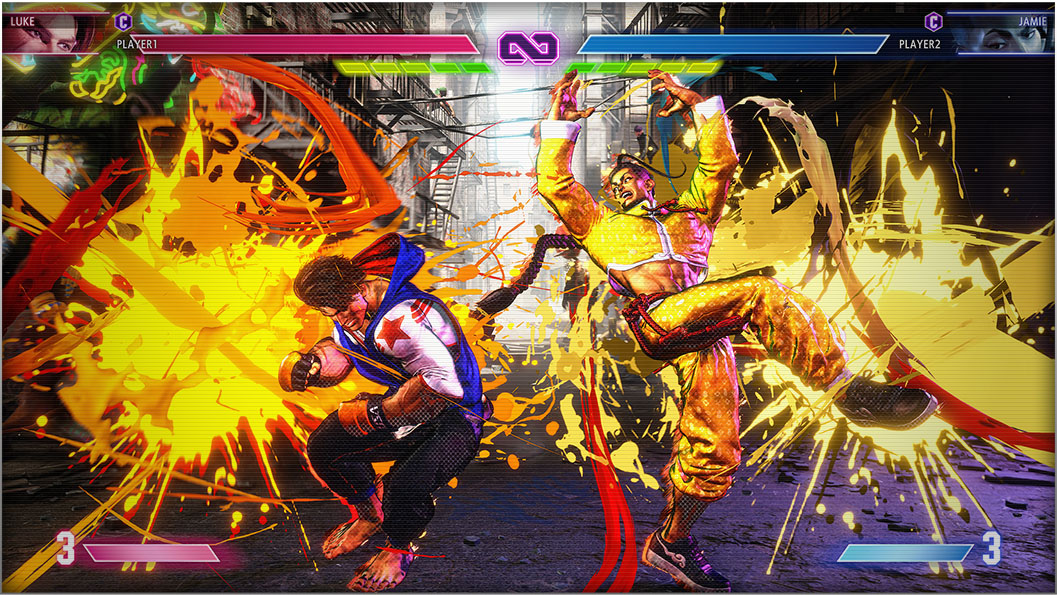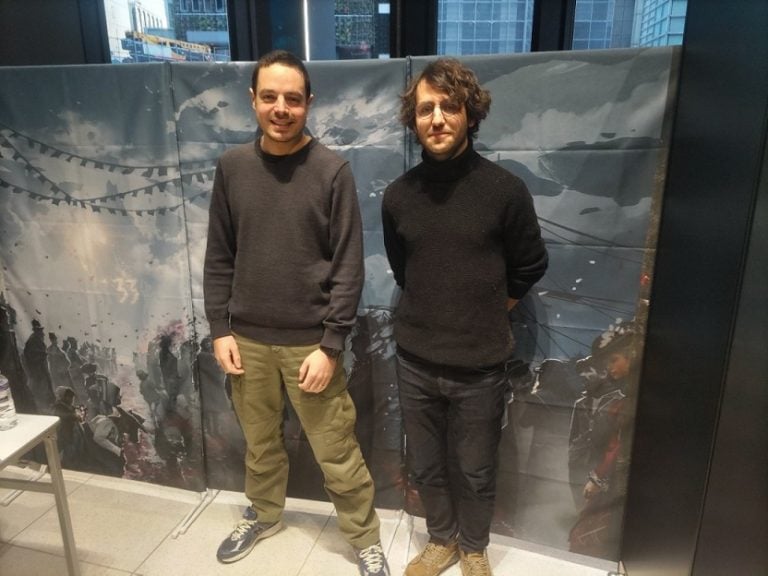Capcom held a conference at CEDEC 2024 (Computer Entertainment Developers Conference 2024) on August 22 (as reported by Famitsu). The presentation was held by Street Fighter 6 planner Naohiro Yasuhara, who gave fascinating insights into how the game’s CPU (AI) was programmed and structured to behave in a human-like and organic way regardless of difficulty level.
*The “CPU” used here refers to the thinking routine of the CPU-controlled character, i.e., the logic that determines its behavior.
Interestingly, to explain the inner structure of Street Fighter 6’s CPU, Yasuhara uses the analogy of a card game, treating each individual action the CPU performs as a card. The CPU, much like a human player, has a limited set of actions they can perform in each given situation. For example, if the opponent jumps, you may choose to guard or use an anti-air attack. These sets of actions (cards) that correspond to specific situations are grouped into what Yasuhara calls “tactical card decks,” and these smaller decks are what make up the CPU’s greater “strategy deck.”

The higher the CPU’s level, the richer its library of “tactical card decks” (i.e. actions they can perform) becomes, meaning it can weave in more diverse strategies. The CPU decides what deck to draw from based on the current situation it’s in, as well as the given difficulty level. But for selecting “the final card to play,” another factor comes into play – the CPU’s “ability to execute” an action. This is another parameter that increases with the CPU’s level.
In Street Fighter 6, much like a human player, the CPU needs to properly input commands in order to perform actions, which means it is also susceptible to making input mistakes. Yasuhara shows an example of a CPU-controlled Zangief seemingly randomly wasting an opening in the opponent’s defense by jumping back instead of attacking. A look at the CPU’s command history reveals that it failed to connect the inputs for a Spinning Piledriver correctly – the kind of mistake you’d expect from a human.

According to Yasuhara, Street Fighter 6’s CPU has an internal gauge that represents how much “pressure” it’s feeling in the current moment, and based on this value, the accuracy of its inputs fluctuates. The lower the level of the CPU, the heavier it’s affected by pressure, lowering its ability to execute tasks.
At low levels, the CPU has few available tactics and poor execution ability. At level 6, which is an intermediate level, its tactics are still relatively limited, but its execution ability is high. Then, at level 7, the tactics become more advanced, but execution ability is unstable, making the CPU susceptible to mistakes in judgment and commands.
Street Fighter 6’s CPU has been earning praise for its nuanced and realistic behavior since the game’s first demo, and this sneak peek into how its logic works, explained cleverly through Yasuhara’s card game analogy, allows even the non-tech-savvy appreciate the design.





